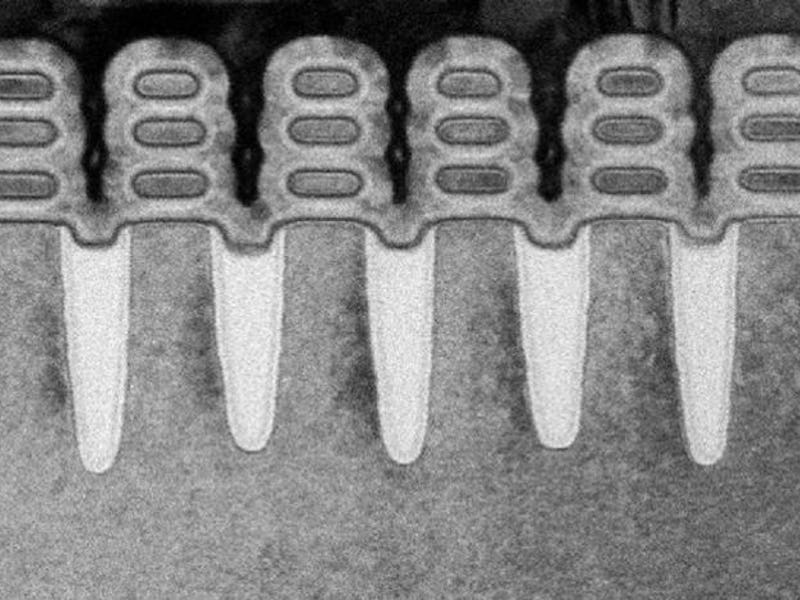Why IBM’s Five-Nanometer Chip is a Breakthrough
It's smaller than a virus, but it will keep the industry on track for Moore’s Law.

After ten years of work, engineers at IBM have created the smallest, most powerful computer chip yet. The new, fingernail-sized chip is just five nanometers thick — smaller than the size of a virus — but can outperform the slightly less-tiny processors that are found in today’s smartphones.
While many expected that Moore’s Law — the 1965 prediction that computing power would double every two years — had finally met its limit, IBM’s new chip will pull it off. Conventional models of chips have mostly met their limits, but the five-nanometer chip — of which it would take 100,000 stacked on top of each other to be as thick as a strand of hair — is based on a fundamentally-different design that allows for faster processing.
Announced just two years after IBM unveiled their seven-nanometer chip that contained 20 billion transistors, this chip will be thinner yet still include an additional ten billion transistors.
This wafer of IBM's new chip is only five nanometers thick.
The circuitry of most chips, including the 10-nanometer chips that are in use today, is based on a three-gate structure. These gates control the flow of electricity among individual transistors on the chip. But IBM’s new chip will use a four-gate structure. Because the transistors will be more interconnected, IBM boasts that their chip will be more powerful than anything on the market: at the same energy cost, it will be 40 percent faster than a conventional chip. To perform at the same level as today’s technology, the chip will only require one quarter as much electricity.
This means that the battery in your phone will likely last longer, and computers will be better suited to handle ongoing innovations in A.I. and smart computing.
While IBM has produced samples of their new chips, largescale manufacturing is unlikely to begin before 2020.